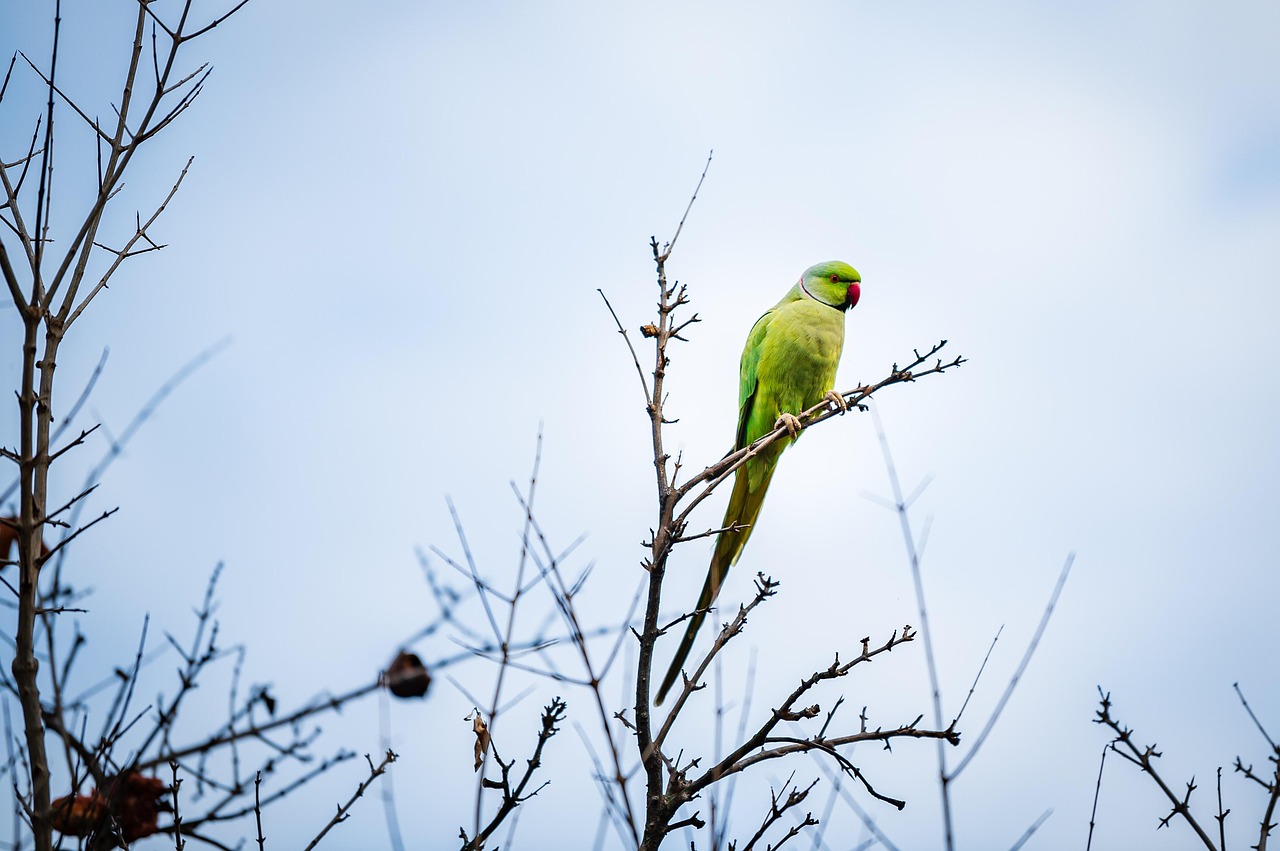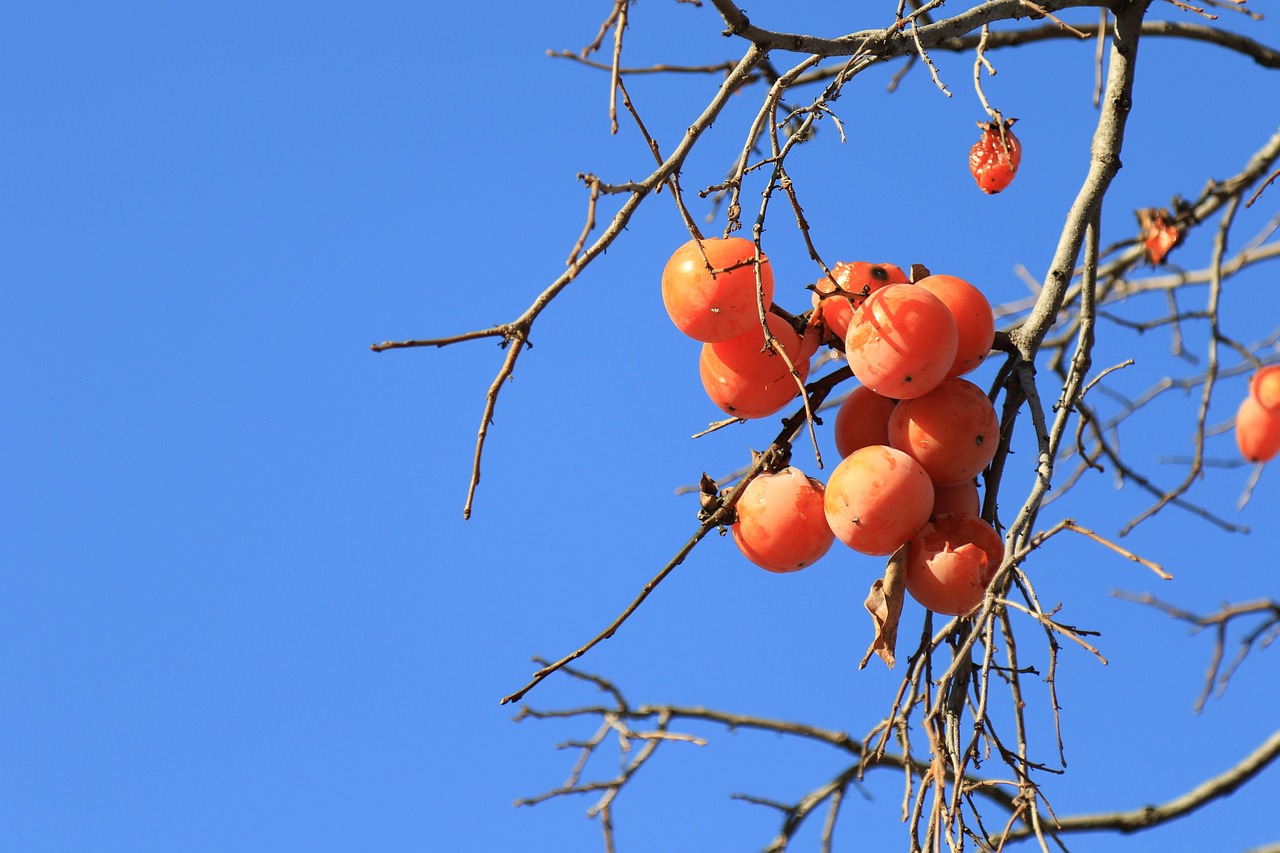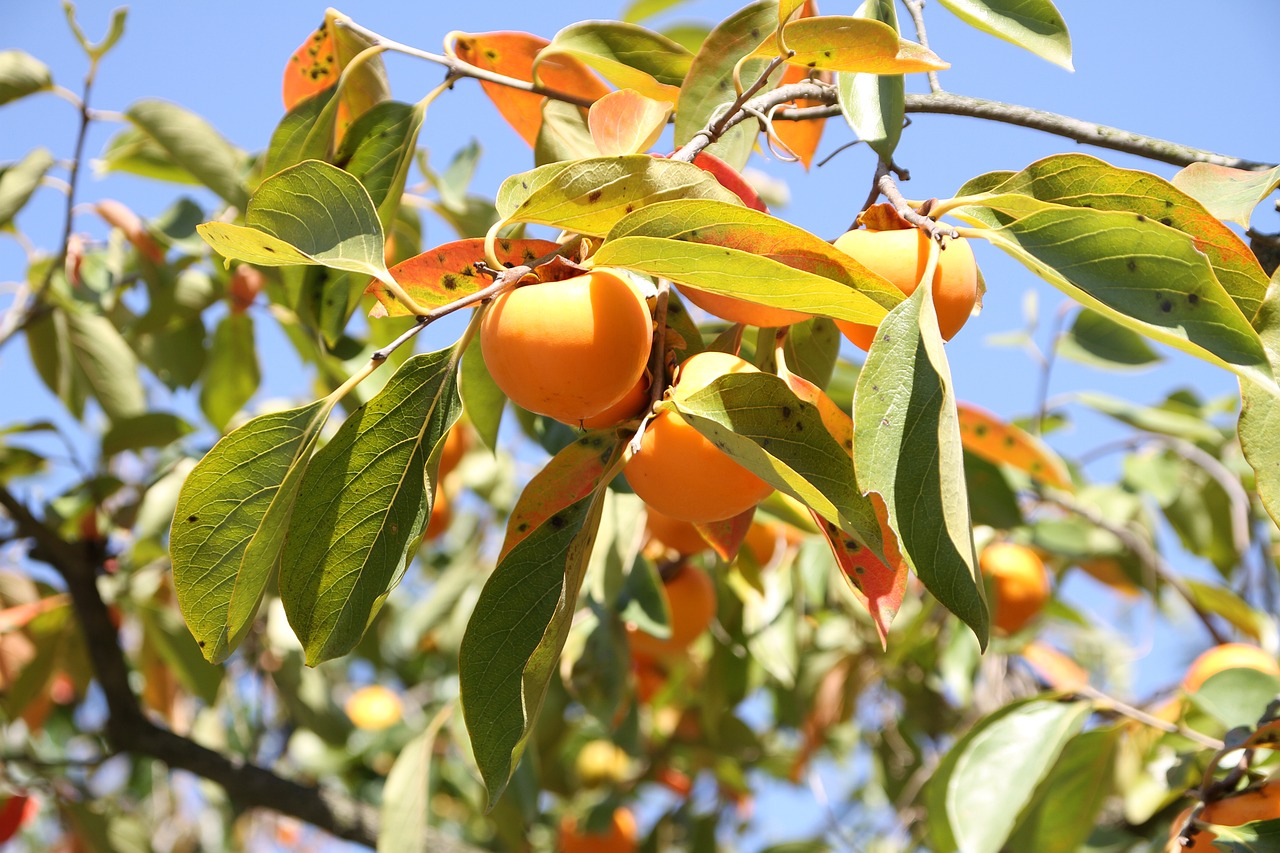The growth rate of persimmon trees in backyard orchards typically ranges from 1 to 2 feet per year, depending on factors such as soil quality, climate, and care practices. With optimal conditions, these trees can reach maturity in about 4 to 6 years.
Understanding Persimmon Trees
Persimmons are deciduous trees native to Asia and North America. They are prized for their sweet, flavorful fruit and beautiful foliage. In a backyard orchard, persimmons not only provide delicious fruit but also enhance the landscape with their vibrant colors during the fall. Understanding their growth rate is essential for effective planning and care.

There are two primary species of persimmon trees: the American persimmon (Diospyros virginiana) and the Japanese persimmon (Diospyros kaki). Both species have unique characteristics that can influence their growth rate and fruit production.
Factors Affecting Growth Rate
Several factors can impact how quickly persimmon trees grow. These include:
- Soil Type: Well-drained, loamy soil is ideal for persimmons. Poor drainage can stunt growth or lead to root rot.
- Climate: Persimmons thrive in USDA hardiness zones 7 through 10. They prefer areas with warm summers and mild winters.
- Watering: Consistent moisture is crucial, especially during the growing season. Overwatering or underwatering can negatively affect growth.
- Fertilization: Proper fertilization promotes healthy growth. A balanced fertilizer applied in spring can enhance growth rates.
- Sunlight: Persimmons need full sun for at least six hours a day for optimal growth and fruiting.
Growth Stages of Persimmon Trees
Persimmon trees experience various growth stages throughout their life cycle. Understanding these stages helps in monitoring progress and providing necessary care.

| Growth Stage | Description | Timeframe |
|---|---|---|
| Seedling | The tree develops roots and begins its first leaves. | 0-1 year |
| Juvenile | The tree grows rapidly, developing a stronger trunk and branches. | 1-3 years |
| Mature | The tree produces flowers and begins to bear fruit. | 4-6 years |
The seedling stage is crucial for establishing a strong root system. During this time, the tree requires careful attention to watering and protection from pests. The juvenile stage sees remarkable growth, where the tree can gain significant height and develop its structure. Finally, by the mature stage, the tree not only stabilizes but also starts producing fruit, marking a rewarding phase for gardeners.
Optimal Conditions for Growth
To achieve the best growth rate for persimmon trees, it is essential to provide optimal conditions. This includes selecting the right location in your backyard, ensuring sufficient sunlight, and maintaining good soil health.
Additionally, regular maintenance practices such as pruning can encourage healthy growth. Pruning helps shape the tree and promotes better air circulation, which reduces the risk of disease.

Planting multiple trees can also enhance pollination, improving fruit yield. Some varieties of persimmons are astringent when unripe; hence, knowing the variety you are planting is key to enjoying the sweet fruit.
Caring for persimmon trees involves patience as they may take several years to bear fruit. However, with proper care and attention, these trees can provide bountiful harvests for many years to come.
Common Pests and Diseases Affecting Persimmon Trees
Like all fruit trees, persimmons are susceptible to various pests and diseases that can hinder their growth and fruit production. Understanding these threats is crucial for maintaining the health of your trees.
Common Pests
Several pests can affect persimmon trees. Here are some of the most common:

- Scale Insects: These pests attach themselves to the bark and leaves, feeding on sap. They can weaken the tree significantly.
- Spider Mites: These tiny arachnids thrive in dry conditions. They cause stippling on leaves, which can lead to leaf drop.
- Fruit Flies: These insects lay eggs in ripening fruit, which can cause significant damage and reduce your harvest.
- Leafhoppers: These pests suck sap from leaves, leading to yellowing and curling of foliage.
Common Diseases
In addition to pests, persimmon trees can also be affected by various diseases:
- Root Rot: Caused by overwatering or poorly drained soil, root rot can quickly kill a tree if not addressed.
- Leaf Spot: This fungal disease manifests as dark spots on leaves. It can lead to premature leaf drop if not treated.
- Powdery Mildew: A common fungal infection that appears as a white powdery coating on leaves, it thrives in humid conditions.
- Canker: This disease results in sunken areas on branches and trunks, which can eventually girdle and kill affected areas.
Managing Pests and Diseases
Effective management of pests and diseases is key to maintaining healthy persimmon trees. Here are some strategies:
- Regular Inspections: Frequently check your trees for signs of pests or diseases. Early detection is crucial for effective management.
- Proper Watering: Ensure that your trees are not overwatered. Good drainage is essential to prevent root rot.
- Natural Predators: Encourage beneficial insects like ladybugs and lacewings that feed on harmful pests.
- Pesticides: Use organic or chemical pesticides as a last resort. Always follow the manufacturer’s instructions to minimize harm to beneficial organisms.
- Pruning: Remove any affected branches or leaves promptly to prevent the spread of diseases.
The Role of Pruning in Growth Rate
Pruning is a vital practice for enhancing the growth rate and overall health of persimmon trees. Proper pruning techniques can improve light penetration, air circulation, and encourage better fruit production.
When to Prune
The best time to prune persimmon trees is during their dormant season, typically late winter or early spring before new growth begins. This timing minimizes stress on the tree and reduces the risk of disease.
Types of Pruning
There are several types of pruning that can benefit persimmon trees:
- Structural Pruning: This involves shaping the tree to develop a strong framework. Focus on removing crossing branches and creating a balanced structure.
- Maintenance Pruning: Regularly remove dead or diseased branches to maintain tree health.
- Fruit Thinning: During the growing season, thinning out excess fruit can lead to larger, healthier fruit and reduce the risk of branch breakage.
Harvesting Persimmons
The successful growth of your persimmon tree culminates in the harvest of its fruit. Knowing when and how to harvest is essential for enjoying the best flavor and quality.
Harvest Timing
Persimmons typically ripen in late fall. The exact timing varies by variety. Astringent varieties should be harvested when they are still firm but have turned a yellow-orange color. Non-astringent varieties can be eaten while still crunchy, usually when they reach full color.
Harvesting Tips
When harvesting persimmons, consider these tips:
- Use Pruners: Cut the fruit from the tree with sharp pruners to avoid damaging the branches.
- Avoid Overripe Fruit: Overripe persimmons can be mushy and less flavorful. Harvest before they become too soft.
- Handle with Care: Persimmons bruise easily. Place them gently into baskets or containers during collection.
Following these guidelines will help ensure a successful harvest, allowing you to enjoy the fruits of your labor from your backyard orchard.
Varieties of Persimmon Trees
Choosing the right variety of persimmon tree is vital for successful growth in your backyard orchard. Each variety has unique characteristics, including growth habits, fruit flavor, and climatic adaptability. Understanding these differences can help you make an informed decision.
Astringent vs. Non-Astringent Varieties
Persimmons are generally classified into two categories: astringent and non-astringent. This classification affects when and how the fruit can be consumed.
| Variety Type | Characteristics | Examples |
|---|---|---|
| Astringent | Fruits must be fully ripe to be edible; they are very bitter when unripe. | Hachiya, Fuyu (when immature) |
| Non-Astringent | Can be eaten while still firm; have a sweet flavor even when not fully ripe. | Fuyu (when ripe), Jiro |
Popular Varieties for Backyard Orchards
Here are some popular persimmon varieties that perform well in backyard settings:
- Hachiya: A classic astringent variety with a rich, sweet flavor when fully ripe. It is best for baking and desserts.
- Fuyu: A popular non-astringent type that can be eaten fresh or used in salads. It remains firm even when ripe.
- Jiro: Another non-astringent variety that is smaller than Fuyu but equally delicious. It is perfect for snacking.
- American Persimmon: Native to North America, this variety produces smaller fruit but is hardy and can adapt to various climates.
Soil Requirements for Persimmon Trees
The soil in which you plant your persimmon trees significantly influences their growth rate and overall health. Understanding the soil requirements can help you create the best environment for your trees.
Ideal Soil Conditions
Persimmons prefer well-drained, loamy soil that retains some moisture while allowing excess water to drain away. Here are some key soil characteristics:
- pH Level: Persimmons thrive in soils with a pH between 6.0 and 7.5. Conduct a soil test to determine your soil’s pH.
- Nutrient-Rich: Enriching your soil with organic matter, like compost, can improve nutrient content and structure.
- Drought Tolerance: While persimmons need consistent moisture, they are also drought-tolerant once established. Ensure the soil is not overly saturated.
Improving Soil Quality
If your soil does not meet the ideal conditions, consider the following methods to enhance it:
- Add Organic Matter: Incorporate compost or well-rotted manure to improve soil structure and nutrient levels.
- Adjust pH: If your soil is too acidic, adding lime can raise the pH. For alkaline soils, sulfur can help lower it.
- Aerate the Soil: Aerating compacted soil can improve drainage and root penetration, encouraging healthier growth.
Irrigation Practices for Healthy Growth
Irrigation is essential for the successful growth of persimmon trees, especially during their early years. Proper watering practices ensure that trees develop robust root systems and thrive in their environment.
Watering Guidelines
Here are some general guidelines for watering persimmon trees:
- Frequency: Water young trees regularly to keep the soil consistently moist. Once established, reduce frequency but ensure deep watering during dry spells.
- Method: Drip irrigation or soaker hoses are effective methods that deliver water directly to the roots while minimizing evaporation.
- Avoid Overwatering: Monitor the soil moisture level. Overwatering can lead to root rot and other problems.
Scheduling Watering
Timing your watering sessions based on seasonal needs is crucial:
- Spring: Regular watering as trees begin to leaf out and flower is essential during this active growth phase.
- Summer: Increased watering may be necessary during hot, dry spells to prevent stress on the trees.
- Fall: Reduce watering as temperatures drop and trees begin to prepare for dormancy.
By implementing these irrigation practices, you can support healthy growth and fruit production in your persimmon trees, leading to a flourishing backyard orchard.
Companion Planting with Persimmons
Companion planting can enhance the growth of persimmon trees by improving soil health, deterring pests, and promoting beneficial relationships among plants. Here are some plants that work well alongside persimmons:
- Legumes: Plants like clover and peas can fix nitrogen in the soil, enriching it for persimmons.
- Marigolds: These vibrant flowers can deter harmful pests that may target persimmons.
- Basil: This herb not only adds flavor to your kitchen but also attracts beneficial insects that prey on pests.
- Comfrey: Known for its deep roots, comfrey can bring up nutrients from the soil that benefit nearby plants.
Incorporating these companion plants can create a more balanced ecosystem in your backyard orchard, ultimately supporting the health and growth of your persimmon trees.
Environmental Benefits of Persimmon Trees
Planting persimmon trees in your backyard orchard not only provides fruit but also offers several environmental benefits:
- Carbon Sequestration: Like all trees, persimmons absorb carbon dioxide from the atmosphere, helping to mitigate climate change.
- Biodiversity Support: The trees provide habitat for various wildlife, including birds and beneficial insects.
- Soil Health Improvement: The roots of persimmon trees help prevent soil erosion and improve soil structure.
- Water Conservation: Mature trees reduce water runoff and increase groundwater recharge through their root systems.
By growing persimmon trees, you contribute positively to your local ecosystem while enjoying the delicious fruits they produce.
Pertinent Research and Resources
Staying informed about best practices for growing persimmons can significantly impact your success as a backyard orchardist. Here are some resources and research findings that may be helpful:
- Extension Services: Many universities offer extension services that provide research-based information on fruit tree care, including persimmons.
- Books: Consider reading books on fruit tree cultivation that cover topics such as pruning, pest management, and soil care. Titles like “The Fruit Gardener’s Bible” can be invaluable.
- Online Forums: Joining gardening forums or social media groups focused on fruit trees can provide support from experienced gardeners.
- Local Gardening Clubs: Participating in local gardening clubs can facilitate knowledge exchange and networking with fellow gardeners who grow persimmons.
Utilizing these resources will help you cultivate a thriving persimmon orchard and stay connected with other enthusiasts.
Final Thoughts
The growth rate of persimmon trees in backyard orchards can be enhanced through proper care, optimal conditions, and informed practices. By selecting the right varieties, understanding soil requirements, and effectively managing water and pests, you can create a fruitful and sustainable orchard.
Persimmons are not only a delicious addition to your garden but also contribute positively to the environment. Their resilience and adaptability make them suitable for various climates, allowing more gardeners to enjoy their unique flavors. As you embark on your journey of cultivating persimmons, remember to be patient; these trees take time to mature but will reward your efforts with bountiful harvests.
Ultimately, growing persimmons is a fulfilling endeavor that enriches both your landscape and your palate. With dedication and knowledge, you can enjoy the beauty and benefits of these wonderful trees for years to come.
